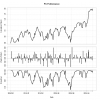MartaB
Nuovo forumer
La mia è solo una maniera discreta per trovare qualcuno che vede quello che vedo io, oppure qualche bluff per prendere in giro il forum, fate voi
Di certo non sono qui per fare beneficenza: sono spietata, io!
P.S. Ovviamente "MartaB" è un altro mio nick: la vergogna di utilizzare direttamente il mio per farmi domande serie sarebbe troppa!!!










